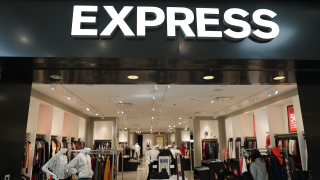The iconic image of Josephine Baker lighting Paris afire in a banana skirt is the first image that comes to mind when we think of the word “burlesque.” Following “La Baker” in the 1940s and 50s was an era of stunning nightclub floorshows that featured African-American women who traveled coast-to-coast and around the world. Yet, the books that claim to detail the history of burlesque say little about women of color and their unique struggles and triumphs.
[SEE! GORGEOUS VINTAGE PHOTOS OF BLACK BURLESQUE PERFORMERS]
African-American women have been performing burlesque in its various incarnations since at least the late 19th century. Early performances could best be described as R-rated variety shows, blending satire and politically commentary (think Colbert Report-style humor) with musical numbers and a bit of raciness. In 1890,The Creole Show debuted featuring sisters draped in lavish costumes, showing off their legs, and even cross-dressing in skits that provided smart social commentary on American culture. Stars of the show included Ada Overton Walker, Stella Wiley, Dora Dean and Belle Davis, who would go on to star in Oriental America, a dazzling spectacle mocking the exotification of African-American and Asian women, illustrating the hypocrisy of America’s policies in the Far East, and the enforcement of Jim Crow laws stateside. And yes, they looked gorgeous while doing it.
[WATCH! THE AUTHOR PERFORM HER SENSUAL “JEZEBEL”]
In 1908, Salome’s Dance of the Seven Veils, a piece with Biblical roots was a socially accepted striptease act that was extremely popular in burlesque shows. Ada Overton was the only African-American woman performing the routine, a retelling of the execution of John the Baptist that Salome character linking to her African roots in an erotic way, a very bold statement for the modern dance movement.
The Theater Owners Booking Association, or TOBA, served as the vaudeville circuit for Black performers; an African-American answer to the Ziegfield Follies, shows included Irvin C. Miller’s Brownskin Models and Chocolate Scandals. Black burlesque halls and shows were common in metropolitan areas during the Jazz Age and the Harlem Renaissance. In 1925, Josephine Baker broke her contract with La Revue Nègre, a show which is largely credited with bringing jazz from America to France, to headline her own show at the Follies Bergere in Paris. It was there where she debuted her most famous routine, Danse Sauvage (yes, the one with the banana skirt). Baker’s ability to take ownership of both her career and her sexuality was remarkable. No other burlesque performer would match her level of stardom.
When JET launched in 1952, readers were given a glimpse into the glamourous, yet often difficult world of Black burlesque stars such as Lee Ta Harris, Rose Hardaway, Jean Idelle, China Doll and Betty Brisbane. It could be argued that African-American burlesque performers had more press and widespread acceptance than their White colleagues. The weekly magazine was a powerful chronicle of Black life across the country and its inclusion of women like Chinkie Grimes, LA Vane, Gerri Wayne, Shelly Devonshire and Jo Ann Norris was significant.
[“BROWN GIRLS BURLESQUE” MEMBERS TALK TAKING IT ALL OFF]
In the 1960s, the workplace for ecdysiasts (an early term for striptease artists) was changing rapidly. Club owners started asking dancers to “mix” with the audience, which meant going to sit and flirt with male patrons after their performances in order to encourage alcohol sales. This practice was the predecessor to the strip club lap dances. Former dancer Tina Pratt, recollects that this practice was more common in White clubs than Black ones and that this new culture caused many performers to leave the business as the tastefulness began to disappear. As she puts it,“ anyone willing to get naked could work.“By the 1970’s, the burlesque scene had all but disappeared and was replaced by the emergence of modern strip clubs; while some featured performers invoke shades of the ornate traditions of burlesque, most club strippers do not.
Revived interest in the art of burlesque emerged in the 1990s, as spontaneous pockets of performers began to sprout up across the country. The neo-burlesque movement grows each year and has become increasingly diverse, thanks to performers of color such as the acclaimed New York-based Brown Girls Burlesque troupe. Today’s dancers are continue the legacy of dancers like Lottie the Body, Tina Pratt and Toni Elling by producing shows that embrace the genre’s theatrical roots while emphasizing body-positive/woman-affirming sensuality.
Chicava HoneyChild is the Creative Producer of Brown Girls Burlesque in New York City and also teaches classes through the troupe’s “Broad Squad Institute”; a MFA student at Goddard College, she is working on a documentary on the history of women of color in burlesque. You can connect with Chicava on Facebook and follow her on Twitter.













